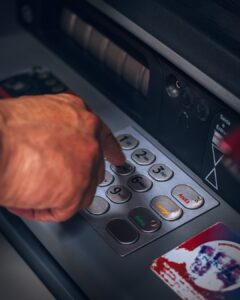Understanding Elliott Waves: A Guide to Forex Trading
Forex trading is a dynamic and ever-evolving market, and to be successful in this field, it is crucial to have a deep understanding of various trading strategies and tools. One of the most widely used and powerful tools in forex trading is Elliott Wave theory. Developed by Ralph Nelson Elliott in the 1930s, this theory has stood the test of time and continues to be a popular choice among traders.
The Elliott Wave theory is based on the idea that the market moves in repetitive patterns, which can be identified and predicted. These patterns are formed by the collective psychology of traders, and they unfold in a series of waves. Understanding these waves and knowing how to interpret them can provide valuable insights into future market movements.
The Elliott Wave theory consists of two types of waves: impulse waves and corrective waves. Impulse waves, also known as motive waves, move in the direction of the overall trend and are composed of five smaller waves. These waves are labeled as 1, 2, 3, 4, and 5. Wave 1 is the first wave in the direction of the trend, followed by wave 2, which is a correction of wave 1. Wave 3 is typically the longest and strongest wave, while wave 4 is a correction of wave 3. Finally, wave 5 is the last wave in the direction of the trend.
On the other hand, corrective waves, also known as corrective waves, move against the overall trend and are composed of three smaller waves. These waves are labeled as A, B, and C. Wave A is the first wave in the opposite direction of the trend, followed by wave B, which is a correction of wave A. Finally, wave C is the last wave in the opposite direction of the trend.
The key to successfully applying the Elliott Wave theory is to identify the larger trend and then analyze the smaller waves within that trend. By doing so, traders can anticipate potential turning points and make informed trading decisions. However, it is important to note that Elliott Wave theory is not a crystal ball and does not guarantee accurate predictions. It is merely a tool that helps traders to understand and interpret market movements.
To effectively use the Elliott Wave theory, traders must learn to identify wave patterns and understand the guidelines that govern them. For example, one guideline states that wave 3 should never be the shortest among waves 1, 3, and 5. Additionally, wave 2 should never retrace more than 100% of wave 1, and wave 4 should never overlap with wave 1.
Another important aspect of the Elliott Wave theory is the concept of Fibonacci ratios. These ratios, such as 0.382, 0.618, and 1.618, are derived from the Fibonacci sequence and are used to determine potential price targets and retracement levels. Traders often use these ratios in conjunction with the Elliott Wave theory to identify areas of support and resistance.
It is worth noting that mastering the Elliott Wave theory requires time, practice, and experience. It is not something that can be learned overnight. Traders must study historical charts, practice wave counting, and analyze real-time market data to gain proficiency in using this tool.
Despite its complexity, the Elliott Wave theory has proven to be a valuable tool for many forex traders. By understanding and applying this theory, traders can gain a deeper understanding of market dynamics and make more informed trading decisions. However, it is essential to remember that no trading strategy is foolproof, and risk management should always be a priority.
In conclusion, the Elliott Wave theory is a powerful tool that can help forex traders identify and predict market movements. By understanding wave patterns and following the guidelines and principles of this theory, traders can gain a competitive edge in the forex market. However, it is important to remember that no strategy guarantees success, and traders should always exercise caution and use proper risk management techniques.






